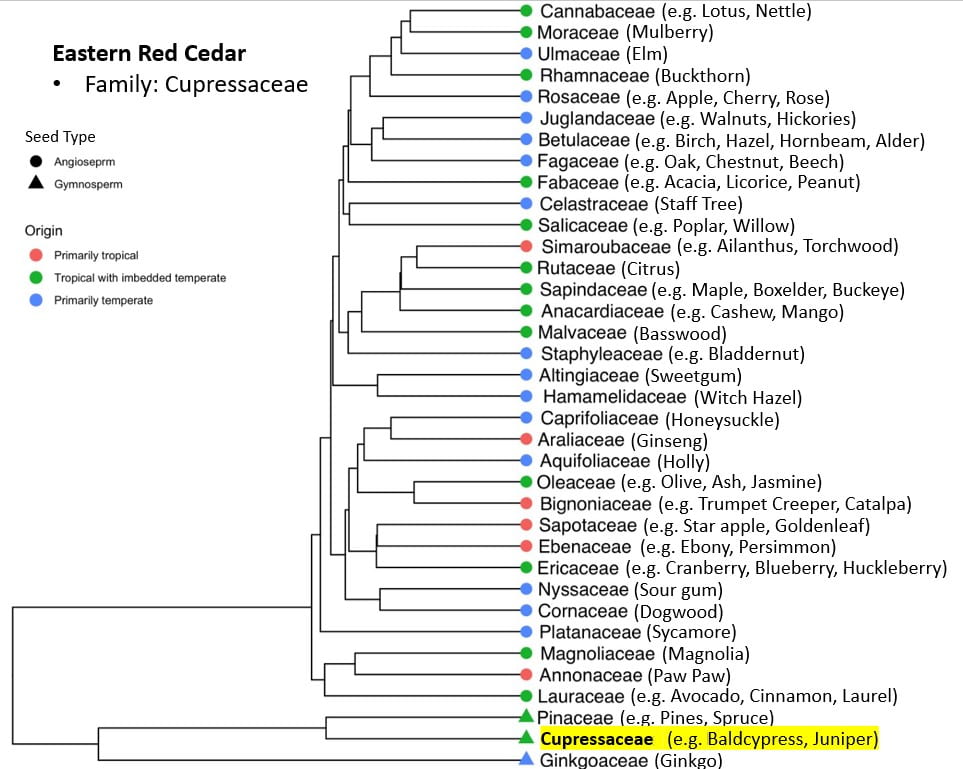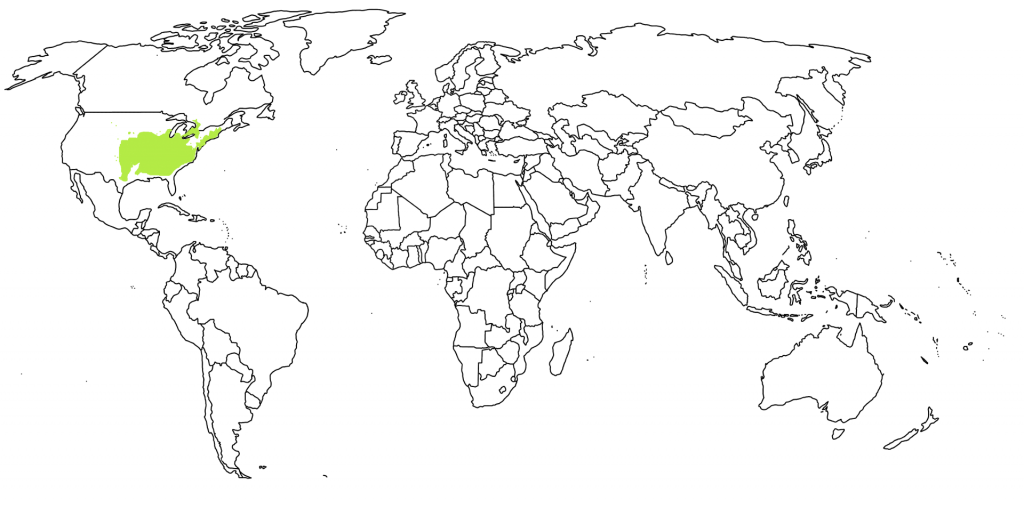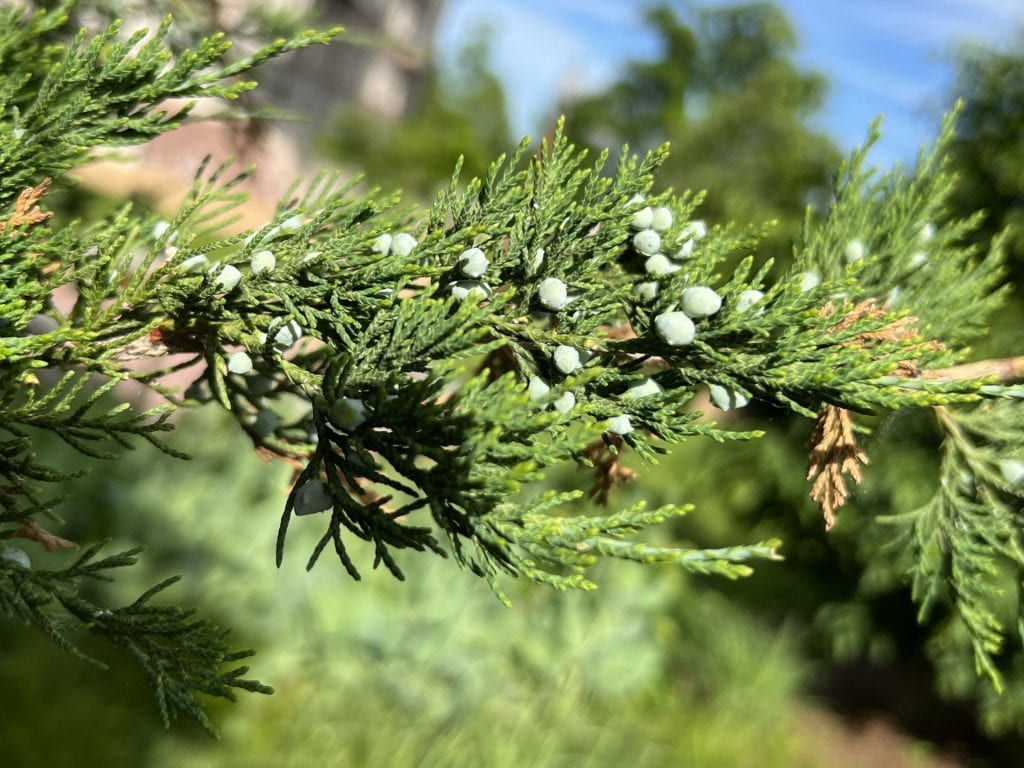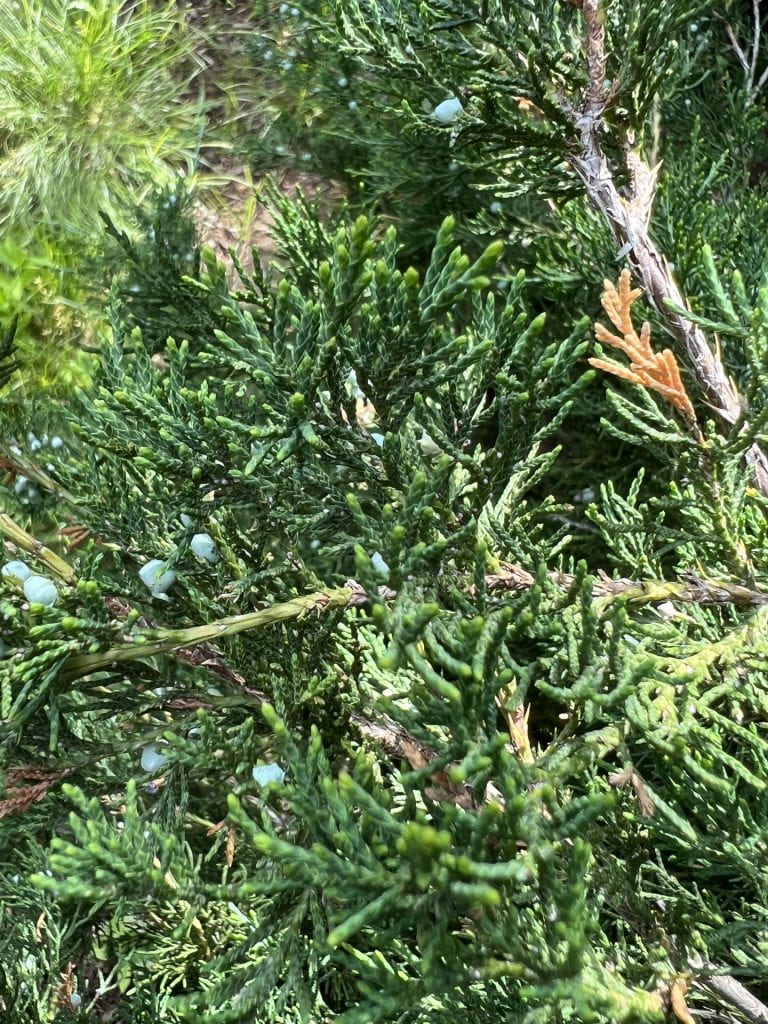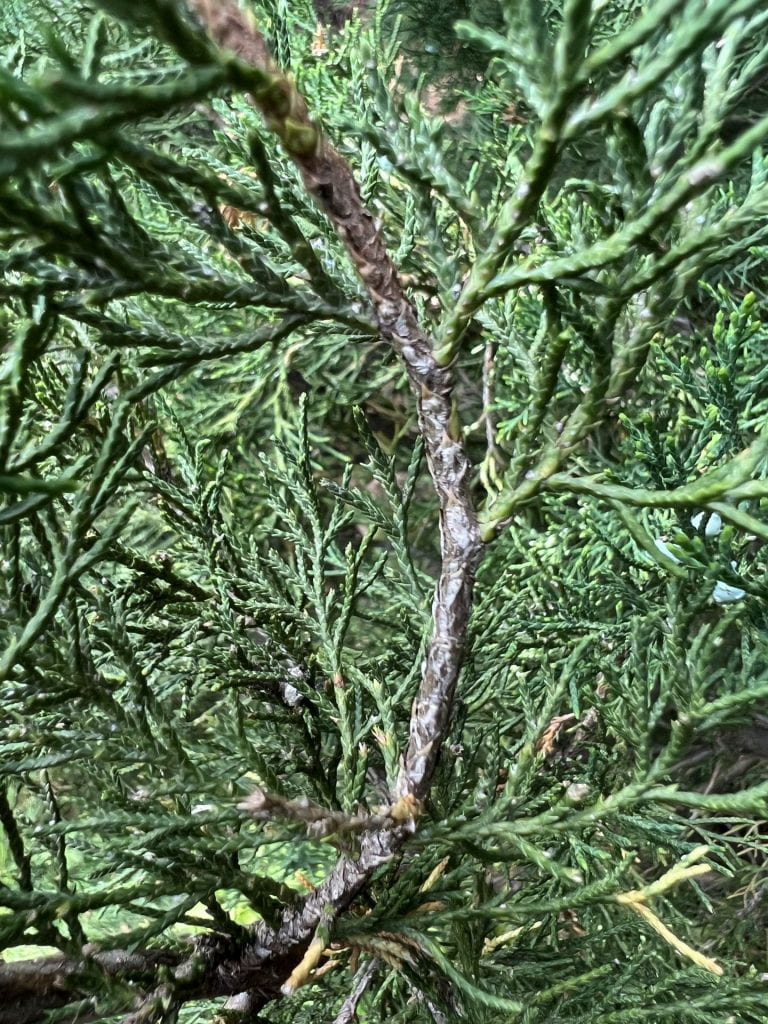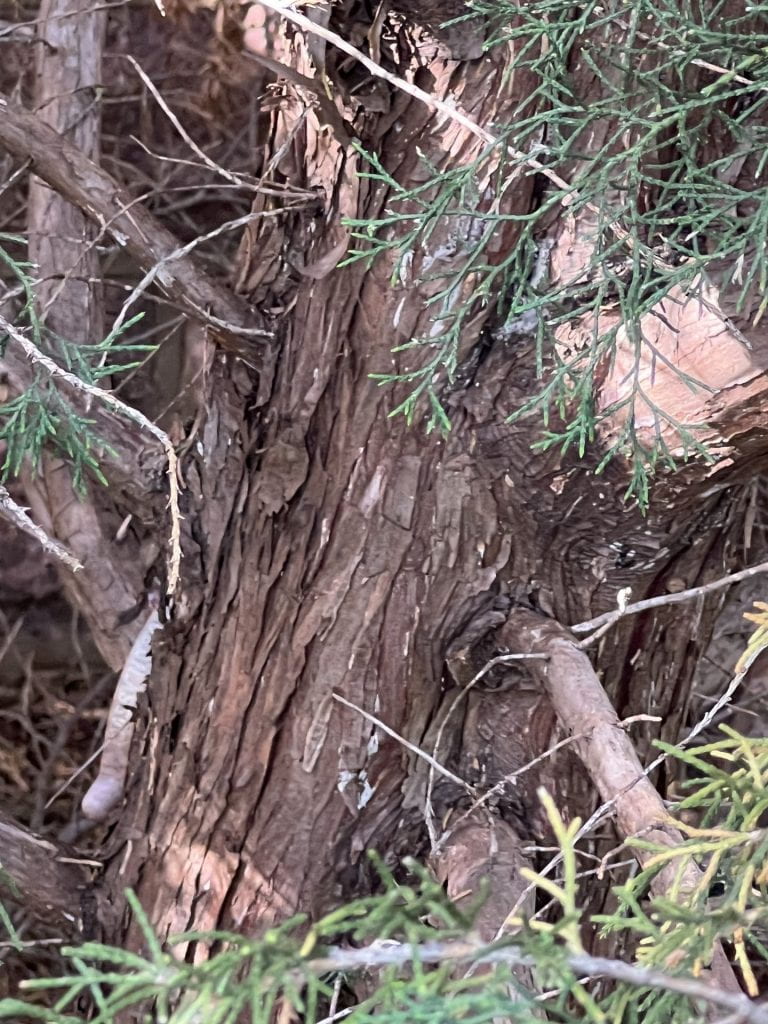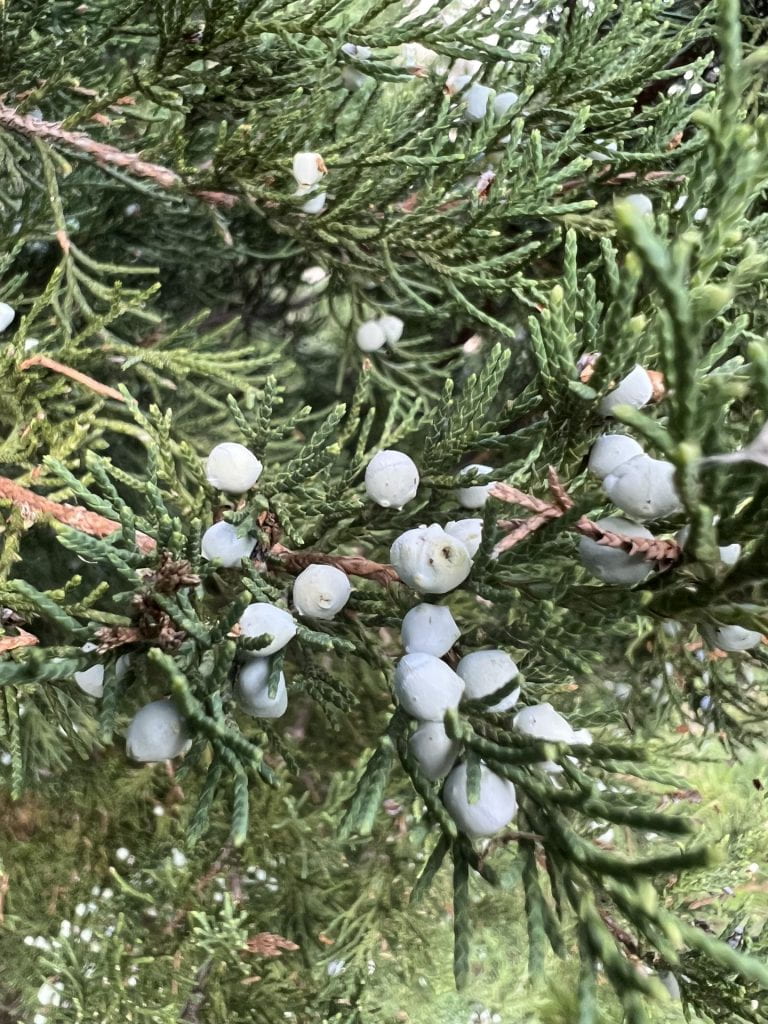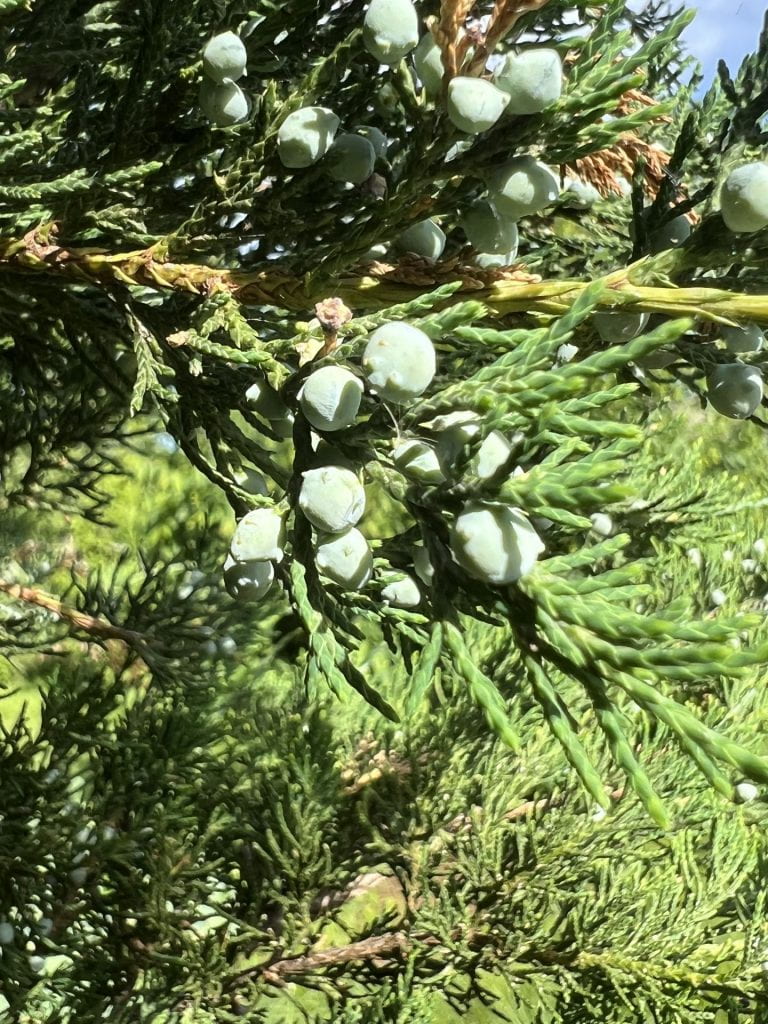Eastern Red Cedar
Arbor Walk #51, Treekeeper ID #1648

This tree is native to Eastern North America; In Missouri, it grows in a variety of habitats across the state and is tolerant of a wide range of soil conditions. Even though “cedar” is in its common name, it is not a true cedar; it is a juniper, which means it has fleshy cones instead of the pine-like cones of true cedars (plus several other distinctions). The bark is reddish-brown, fibrous, and peels off in narrow strips. The heartwood is aromatic, and is often used in the making of cedar chests.
This plant is native to Missouri, but it is also considered invasive to some conservationists. Historically Eastern Red Cedars were only present on specific landscapes such as rocky bluffs but now can be found in many different environments. Young Eastern Red Cedars have very little protection against fires. That is why they thrived in areas where fires rarely occured, but since humans have suppressed natural fires for hundreds of years, they have spread rapidly, outcompeting several other natives.

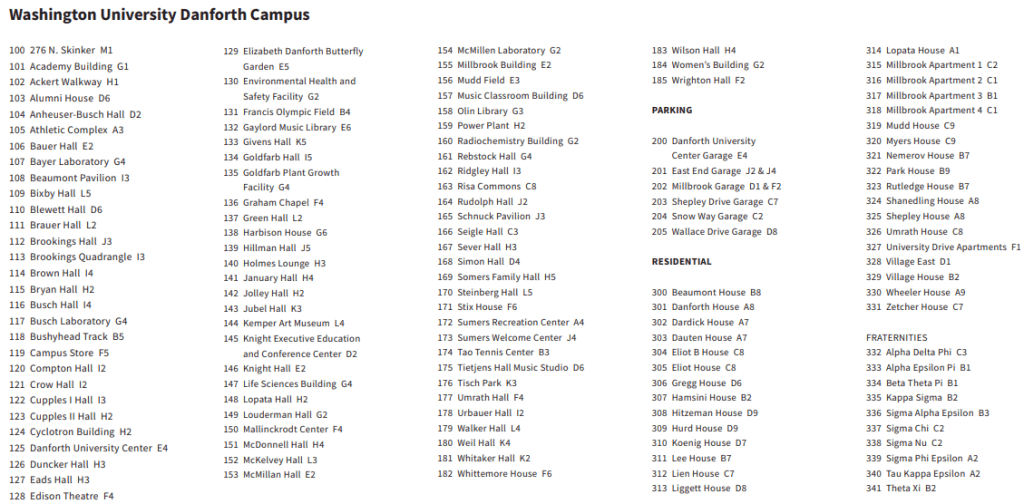
GPS Coordinates
N/A
Percent Concrete
N/A
Distance to Buildings
| Year | Close Building #1 | Close Building #2 | Close Building #3 |
|---|---|---|---|
| 2020 | Goldfarb Hall, 1.83 m | Hillman Hall, 34.77 m | Brown Hall, 26.61 m |
Distance to Other Species
| Year | Close Species #1 | Close Species # 2 | Close Species # 3 |
|---|---|---|---|
| 2020 | Eastern Red Cedar, 4.50 m | American Hornbeam, 7.90 m | American Hornbeam, 8.15 m |
Standard Measurements
| Year | Height (m) | DBH (cm) | Crown Diameter N-S (m) | Crown Diameter E-W (m) | Average Crown Diameter (m) |
|---|---|---|---|---|---|
| 2020 | 6.12 | 10.90 | 3.88 | 3.97 | 3.925 |
| 2023 | 8.25 | 15 | 5.53 | 6.03 | 5.78 |
Nests and Pests
| Year | Description |
|---|---|
| 2020 | Cedar-Apple Rust Tree becomes thinner and thinner as it becomes taller; top of canopy is bare Lots of twig blight: some reddened and dead, some white (fungal), some bare |
| 2023 | Parasite on branches |
Leaf Identification
The Eastern Red Cedar has two types of leaves that often occur on the same tree. The more common leaves are scale-like and are arranged in opposite decussate pairs (opposite pairs rotate 90 degrees after every pair). They rarely form in whorls of three or four. The second are more needle-like and are usually only found on young trees and fast growing shoots. Both are dark green to blue-green and stay attached all year. They can turn a bronzy-green color in winter.
Twig and Bud Identification
The twig of the Eastern Red Cedar starts out green and matures to grayish-brown. The buds are not easily visible in this species.
Bark Identification
The bark of the Eastern Red Cedar is reddish-brown, fiborous, and peels off in narrow strips.
Cone Identification
The Eastern Red Cedar is typically dioecious. The staminate cones are small, rounded, orangish, and appear at the end of twigs. Ovulate cones are yellowish-tan to blue-green scales at branch tips, little more than 1/16 inch long. The cone is blue and berry-like.
